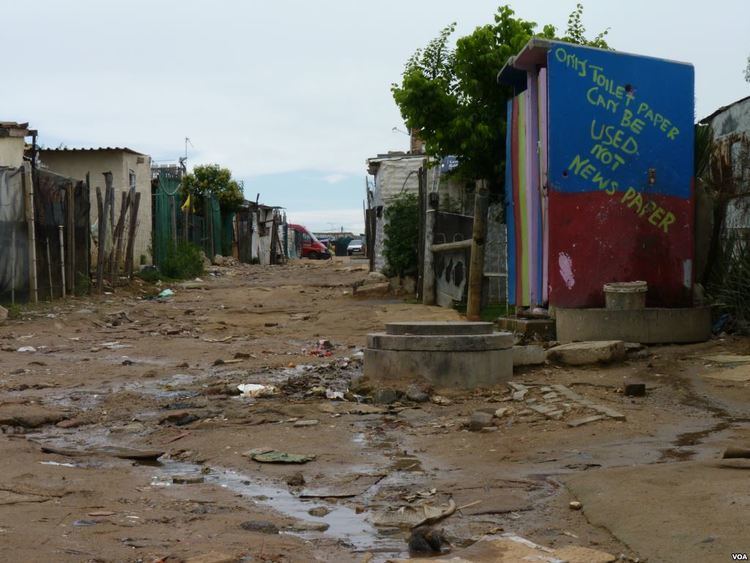Postal code (street) 2189 Local time Tuesday 1:13 PM | Established 1995 PO box 2069 | |
 | ||
Weather 28°C, Wind SE at 14 km/h, 32% Humidity | ||
Africa a drive through one of south africas most dangerous neighborhoods diepsloot johannesburg
Diepsloot, Afrikaans for "deep ditch", is a densely populated township in the north of Johannesburg, South Africa inhabited mainly by Black people. It is located in the newly formed Region A (formerly regions 1 and 2). It is made up of fully government-subsidised housing (Extensions 4, 5, 6, 9, 10), brick houses built by landowners (Extensions 2 and 7), partially government subsidised houses (Extension 3/Tanganani) as well as shacks (the biggest sections being Extensions 1, 12 and 13). The majority (45,5%) of residents rent their property from a landowner who has subdivided their stand.
Contents
- Africa a drive through one of south africas most dangerous neighborhoods diepsloot johannesburg
- Map of Diepsloot South Africa
- Mid shot of children residents of diepsloot township go
- History
- Current era
- Also
- References
Map of Diepsloot, South Africa
Mid shot of children residents of diepsloot township go
History
Diepsloot township is not far from the wealthy suburbs of Dainfern and Chartwell, and was established in 1995 as a transit camp for people who had been removed from Zevenfontein (informally known as eSgodiphola). Here, 1 124 plots were made available. People were to stay in the transit camp until land elsewhere became available. For many, this camp became a permanent home. The Transvaal Provincial Administration, which was then the local authority, developed the plots into formal housing stands. In 1999, the former Northern Municipality Local Council began to initiate formal development in the area. There were about 4 000 families living in backyard shacks and 6 035 families in the reception area, a transit zone established by the city council, says Alan Kitchin, the special projects assistant director in the City of Johannesburg's housing department.
To compound the congestion, in 2001 the Gauteng government moved about 5 000 families to Diepsloot from the banks of the Jukskei River in Alexandra. The move, part of the Alexandra Renewal Project, was intended "to de-congest and address the need to create a healthy and clean living environment" in Alexandra, one of South Africa's oldest townships. The aim was also to prevent shacks being washed away when the river flooded, something that happened year after year. The influx of people from Alexandra placed further strain on the already stretched resources in Diepsloot. The relocated families did not qualify for housing benefits.
Current era
So far, 4 900 Reconstruction and Development Programme (RDP) houses have been constructed in Diepsloot; another 737 housing stands with water and sanitation facilities have been allocated. The national housing policy has moved away from the mass provision of standard RDP houses: it now follows the People's Housing Process model, a project being implemented in Diepsloot West. RDP houses are still being constructed, but the new process has the state provide a subsidy that covers the cost of building a house. The prospective home owner is expected to pay a portion of the costs.
Diepsloot is now home to about 140 000 people; many of them living in shacks 3 m by 2 m assembled from scrap metal, wood, plastic and cardboard. Some families lack access to basic services such as running water, sewage and rubbish removal. All extensions except for extensions 1, 5, 12 and 13 have tar roads, drainage and street lights. Members of the local council live in all extensions, except extension 5.
Extensions 1 and 5 often get flooded in the heavy summer rains as the water from the mall also runs down into their roads. Residents use paraffin and electric stoves for cooking. According to the 2011 census, 18,4% of dwellers have piped water inside their dwelling, 61,2% have electricity and 74,1% have access to a flush toilet connected to the sewage system. The majority of shacks which have access to electricity use a prepaid meter, but this is becoming increasingly expensive and is used sparingly. .
Also
Diepsloot featured on the BBC program Law and Disorder in Johannesburg. Karl Pilkington visited Diepsloot and talked to a group of students as a part of Season Two of An Idiot Abroad in 2011.
